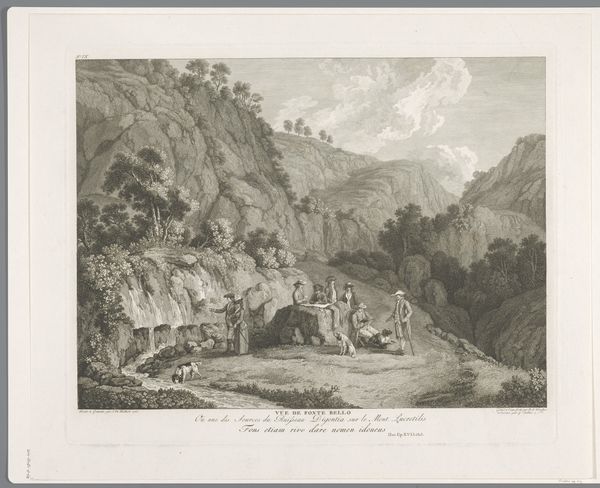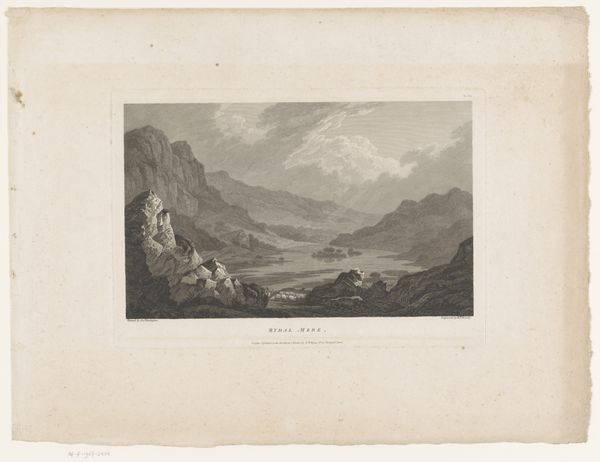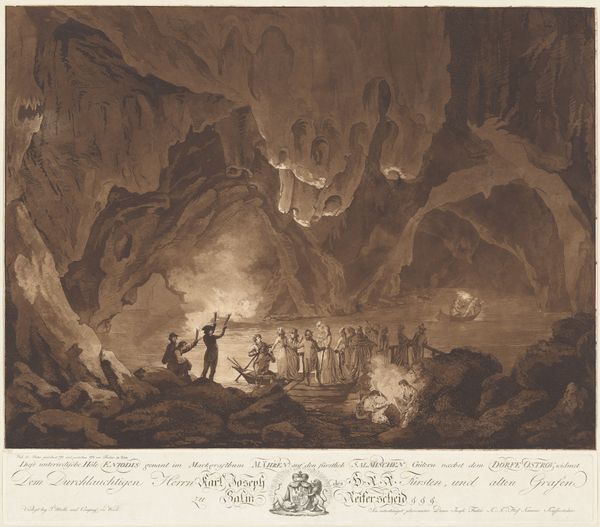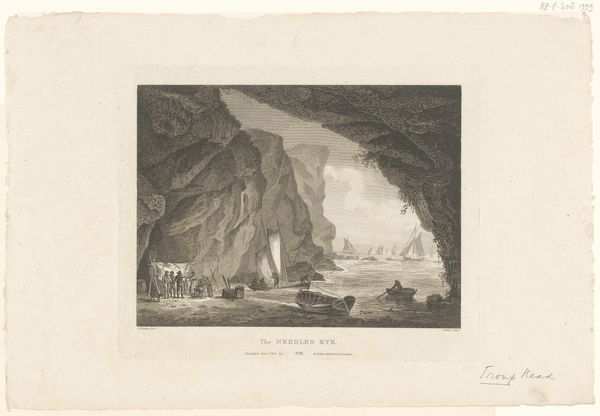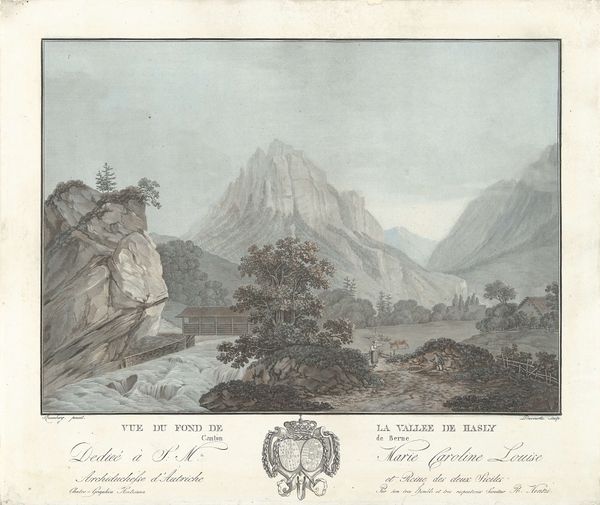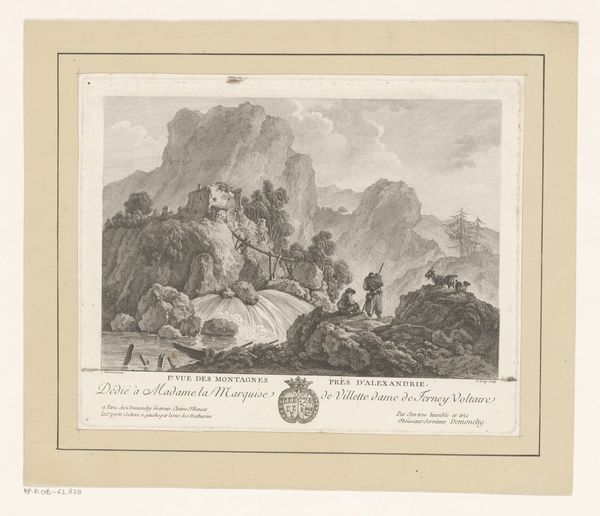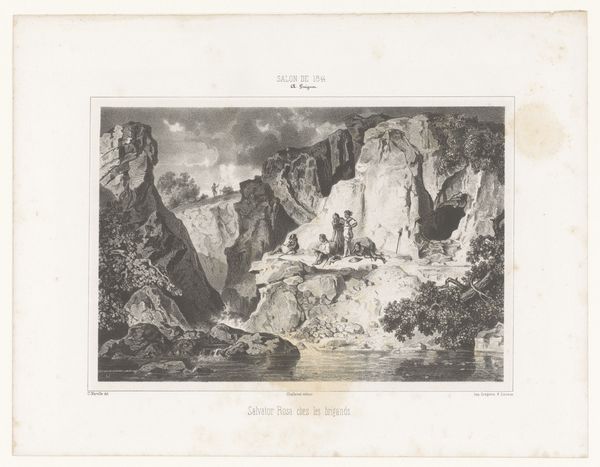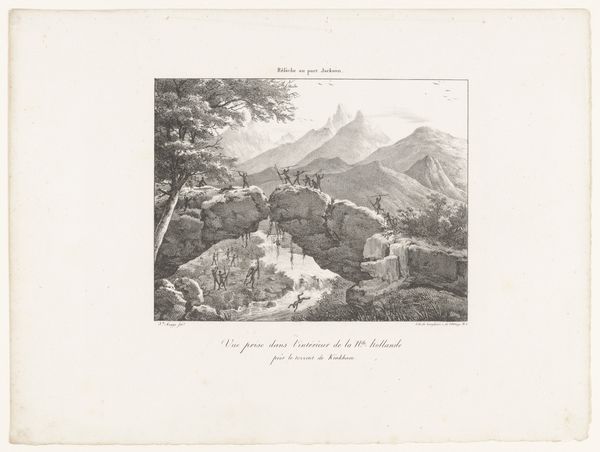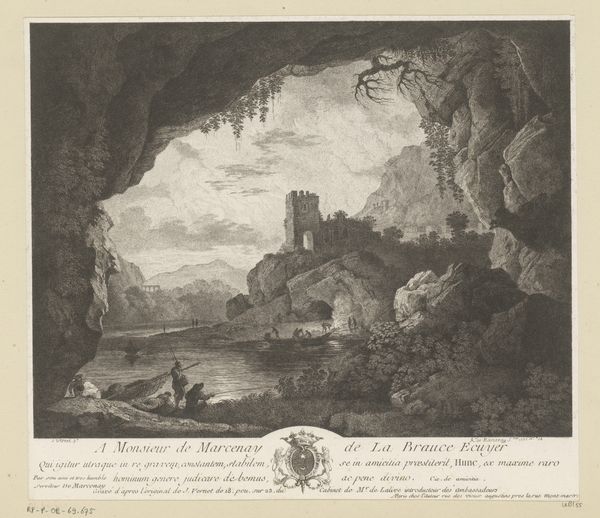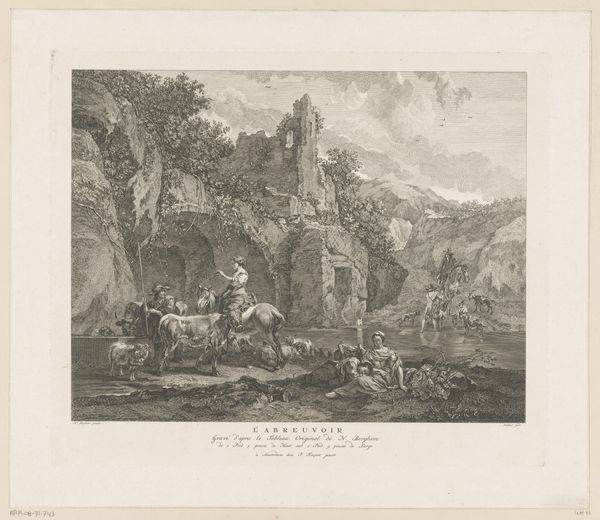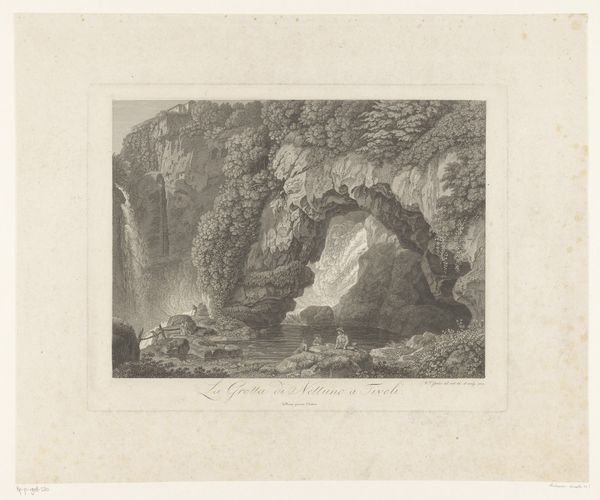
print, etching
# print
#
etching
#
landscape
#
romanticism
#
genre-painting
Dimensions: height 320 mm, width 456 mm
Copyright: Rijks Museum: Open Domain
Curator: Isn't this enchanting? We're looking at "Gezicht op een landschap vanuit de Grot van de Draak," or "View of a Landscape from the Dragon's Cave," a print dating roughly from 1763 to 1820 by Charles Melchior Descourtis. It’s an etching, colored so delicately. Editor: My initial impression? Sublime. It's that contrast, the dark, looming cave mouth against the vast, airy landscape. A classic romantic framing, a theatre of nature! And, are those… are those *people* just casually picnicking on the dragon's doorstep? Curator: They are indeed. Descourtis excelled at landscapes, often with a hint of genre-painting. This work perfectly encapsulates the Romantic era's fascination with the sublime, the delicate dance between awe and terror. Note the figures: dwarfed by nature's grandeur, yet undeniably present. Editor: Which begs the question: who *made* this? Not just Descourtis, the artist, but the engraver, the paper maker. The subtle colouring; did he apply that himself, or was that delegated, becoming industrialized craft? It's about luxury, and accessibility. These prints disseminated romantic ideals on a broader scale. How democratic! Curator: Absolutely. I always come back to the contrast, though. Light dances across the distant mountains, yet the cave interior retains a murky, almost primeval quality. Is it protective, or threatening? Descourtis so skillfully holds that tension. Editor: Tension, yes, and it is also an economy of vision! Notice the fine lines suggesting depth and scale. Romanticism packaged for mass consumption; it makes me ponder what social status one acquired in owning such scenery. Art meets interior decor in the rise of the middle class. Curator: It does ask you to consider how landscapes began to signify and decorate private space... Ultimately, "Dragon's Cave" pulls me into a reverie—that tension you mentioned invites such intimate wonder. Editor: Absolutely. From its detailed construction to broader consumption networks, it has a surprisingly modern approach. It's a postcard from a bygone era.
Comments
No comments
Be the first to comment and join the conversation on the ultimate creative platform.
